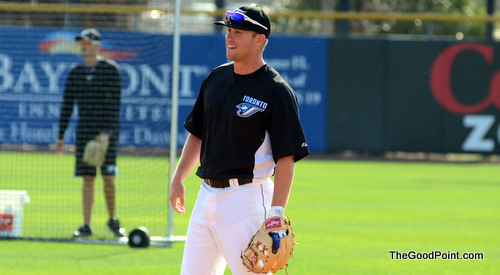
MLB addresses concussions with seven-day DL
There’s a rising awareness concerning brain injuries across all professional sports these days, their seriousness, and the jeopardy players put themselves in by attempting to play through them, but we need not look at the severity of concussions in hockey or football to understand why Major League Baseball is taking measures of their own to prevent head trauma in baseball.
On May 29, 2008, Toronto Blue Jay second baseman Aaron Hill missed 107 games as a result of post-concussion syndrome after colliding with then-teammate David Eckstein.
Inspired by the Hill case and others like it, MLB has begun to address growing concerns surrounding brain injuries and their potentially significant effects. Their first method of action has been the creation of a seven-day disabled list specifically for players dealing with the after-effects of a concussion.
But why is the creation of a seven-day disabled list a way of addressing the issue? Why put a player on the disabled list at all?
The new seven-day DL acts in much the same way as the 15-day DL, with the exceptions that the player must have suffered a head injury and the team have an expert in mild brain trauma on staff to assess the situation in order for this DL to be used; or not used.
This DL was created to limit the severity of brain injuries and their effects on athletes as well as to prevent the unnecessary risks inherent with poor injury management.
[php snippet=1]
Far too often players are allowed to return to action while suffering from a concussion to avoid having to be placed on the 15- or 60-day DL. The thinking is that a mild concussion will only take a few days to overcome and teams don’t want players to miss an extra week or more of playing time, let alone take up a spot on the 25-man active roster as a non-active player.
While the recovery time for most mild brain injuries is often longer than seven days, one of the biggest advantages of the creation of the seven-day DL is that it gives teams a chance to assess the seriousness of the injury while neither being penalized in roster size for their caution nor placing the player in danger of acquiring a second, more damaging brain injury.
With the extra window of precaution, teams, players and doctors can more thoroughly assess whether a player is able to play or is, perhaps, a candidate for a stint on a longer DL.
The seven-day DL is a great first step, but it’s not all that’s being done to abate the frightening trend. In addition to the new disabled list, both the league and player’s union expect changes to the way in which players are tested and evaluated.
“This policy, which reflects the collective expertise of many of the foremost authorities in the field,” says MLB commissioner Bud Selig in a press release on MLB.com, “will benefit players, umpires and clubs alike, and I am proud of the spirit of co-operation that has led us to this result.”
As in the steroid issue, actions such as these are long overdue, but that doesn’t mean they are not appreciated. With growing awareness of the effects of brain injuries in sports, it is up to player unions and the leagues themselves to take the necessary steps to reduce risk.
[php snippet=1]

